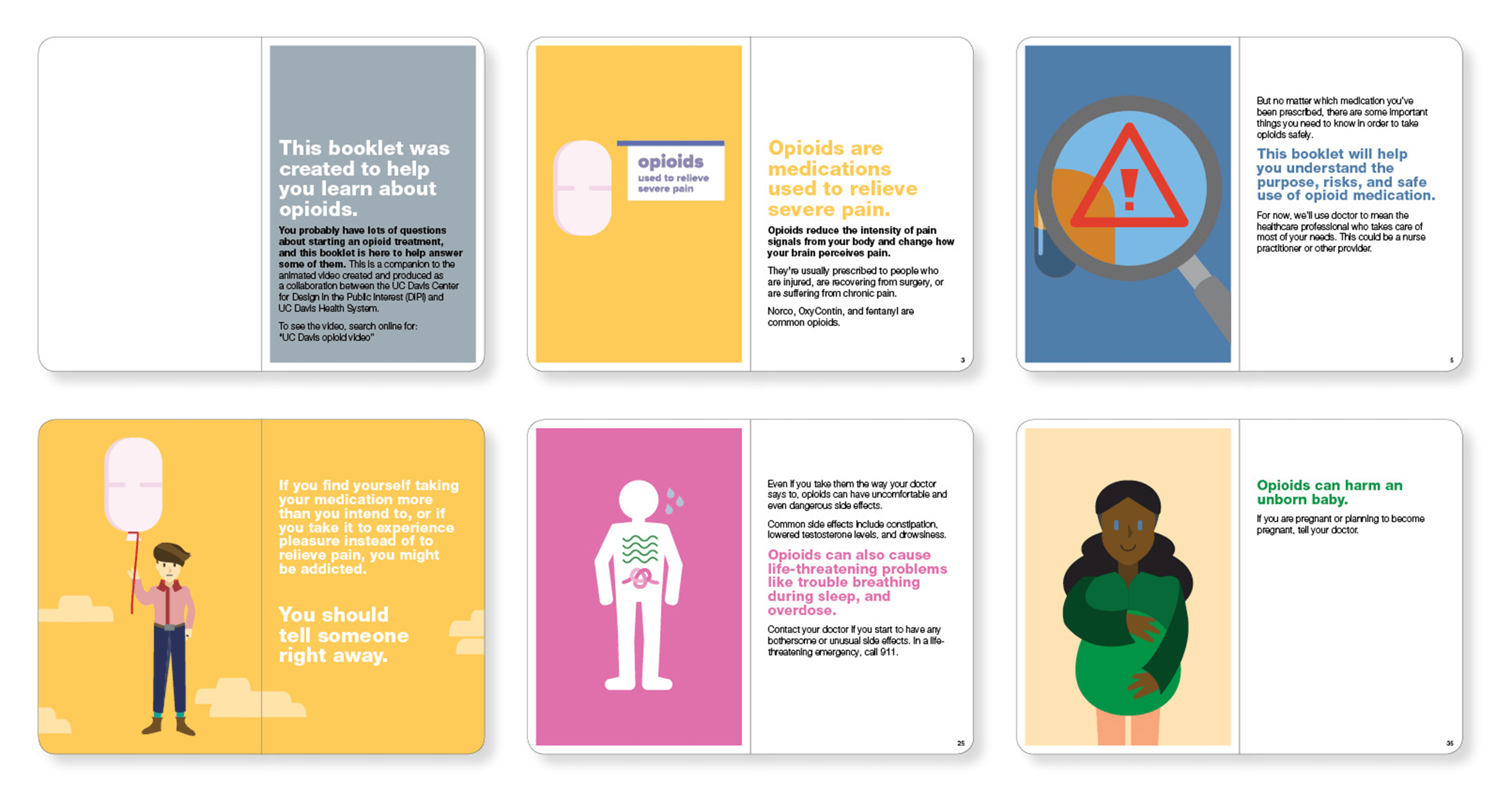Design in the Public Interest
︎ information design + service design
︎ public sector initiatives
︎ UC Davis Center for Design in the Public Interest (DiPi) ︎
In 2009 Studio/lab co-founder Susan Verba established the Center for Design in the Public Interest (DiPi) at the University of California, Davis. A major focus of the Center’s work is The Pain Project, a cooperative venture with UC Davis Health and Hill Country Health and Wellness Center (a rural clinic serving low-income patients) that aims to improve patient-provider communication about chronic pain.
Pain is a crisis. As many as 100 million Americans suffer from chronic pain. And although pain itself is a universal experience, it is difficult to communicate, and pain perception and communication vary across ages, genders, and cultures. More than 2 million Americans suffer from an opioid use disorder—meaning they are addicted to prescription opiods—and about 90 Americans die every day from overdoses that involve an opioid Providers additionally lack adequate informational resources for engaging patients in their own care, and patients lack effective ways to track and communicate their pain or to fully understand treatment options.
The Pain Project seeks to understand and address problems in pain communication by redesigning existing tools and creating new ones. It responds to one of the knottiest medical problems facing both patients and clinicians: the subjective nature of pain.
Pain is a crisis. As many as 100 million Americans suffer from chronic pain. And although pain itself is a universal experience, it is difficult to communicate, and pain perception and communication vary across ages, genders, and cultures. More than 2 million Americans suffer from an opioid use disorder—meaning they are addicted to prescription opiods—and about 90 Americans die every day from overdoses that involve an opioid Providers additionally lack adequate informational resources for engaging patients in their own care, and patients lack effective ways to track and communicate their pain or to fully understand treatment options.
The Pain Project seeks to understand and address problems in pain communication by redesigning existing tools and creating new ones. It responds to one of the knottiest medical problems facing both patients and clinicians: the subjective nature of pain.



